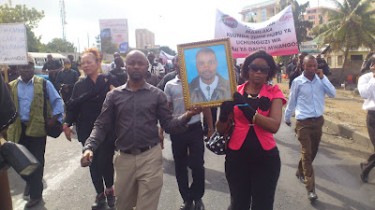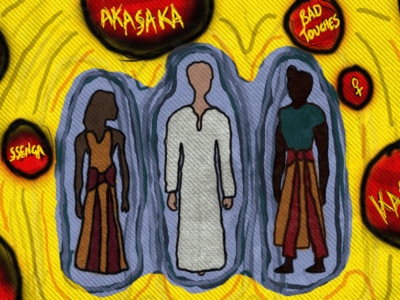Tanzania has experienced several crises since October 2010 general elections, including some which have resulted in violence and death. Blogger Dunia Duara made a (not complete) list of events fuelled by different kinds of crises or conflicts, which recently have caused serious problems in Tanzania:
2011 January: CHADEMA [main opposition party] lead demonstration in Arusha conflicts with police
2011 February: Explosions in Gongo La Mboto
2011 July: [street vendors] clash with police in Mwanza
2011 September: MV Spicelander sinks between Zanzibar and Pemba
2011 December: Dar es Salaam floods
2012 February: Police killings in Songea
2012 April: Land issues and bi-elections in Arumeru
2012 May: Riots in Zanzibar related to UAMSHO [separatist group in Zanzibar]
2012 June: Doctors’ strike (back in February and onwards) and the abduction of Dr Ulimboka.
2012 July: A ferry on its way from Dar es Salaam to Zanzibar sinks.
2012 July: Riots in Zanzibar related to UAMSHO, and mourning of the dead from the ferry accident.
Most recently, on September 2, 2012, Tanzanian journalist Daudi Mwangosi was killed by a tear gas canister in Nyololo Village in Mufindi South (Iringa Region) in Southern Tanzania. The Citizen was amongst the first of the Tanzanian dailies to report about the incident, describing how police used tear gas to disperse a group of CHADEMA (opposition party) supporters:
Mr Mwangosi becomes the second person to be killed in conflicts pitting the Police Force and the opposition party in the space of two weeks. On August 27, one Ally Zona was killed in Morogoro as police dispersed Chadema supporters who were gearing up for a demonstrations.
Pictures of the incident in Nyololo Village quickly circulated on social media sites. The blog Wawuti.com has collected a comprehensive selection (see also photo above). [Please, be warned that some of the photos are very graphic, depicting the remains of the deceased journalist whose body was blown to pieces by the tear gas canister.]
The incident has been covered intensively and many different newspapers, in Kiswahili and English as well as international, have commented extensively. Social media users have expressed anger and shock over what appears to be a senseless and very violent killing. People have expressed shock about both the killing and the police brutality.
Daraja blog was quick to produce a factual list of ‘key sources’, including links to Tanzania's Media Council's statement and the World Association of Press Council's statement, but Daraja also did a thorough analysis – stating in the headline that “a line has been crossed”.
First, an overview of what happened:
They tell us that Mwangosi was in Nyololo together with several other journalists to report on Chadema opening an office in the village, in defiance of police orders against political activities during the census period. There was a heavy police presence in the village. Another journalist, Godfrey Mushi of Nipashe, was apprehended by the police, and Mwangosi went to find out why. A group of police officers then turned on Mwangosi, beating him badly for several minutes.
The reports tell us that Regional Police Commander, Michael Kamuhanda, was nearby in a stationary vehicle, and was informed that the man the police were beating was a journalist. However, he took no steps to stop this, and a few minutes later a tear gas cannister was shot into Mwangosi's stomach from point blank range. Mwangosi died instantly, and a police officer was injured.

Journalists demonstrate in Dar es Salaam on September 10 against the police violence which caused Daudi Mwangosi's death. Photo by Gaure Mdee, used by permission.
Daraja continues:
There is no suggestion that Daud was doing anything improper. He was there as a journalist, with a legitimate right to be there and to report on Chadema's activities and the police's response. He was not there as a Chadema supporter at a rally, so he was not even breaching the police ban on political activities during the census period. (Though even if a Chadema activist who had been killed in this way, the police's actions would still have been disproportionate and wrong.)
Daraja raises serious questions:
Will the responsible police be held to account for this?
And what will be the effect on the media?
The answers are far from given.
Tanzanian media professionals have expressed their sympathy with their former colleague when they demonstrated in Dar es Salaam on September 10, against the most recent police violence.
Tanzania's reputation as a peaceful country is indeed becoming increasingly questionable with these recent events.








2 comments
The seriousness of issues appraising in Tanzania since last year with no or limited response by the governement makes me question the validity of true democratic republic! As a citizen I am outragged and concerned deeply for what my country offers in terms of safety and peaceful process of the system that has been recently abused. Who will be held responsible and who will provide assurance for mere safety of the people? Democracy is surely out the door it seems as is development
More on the topic:
http://www.theeastafrican.co.ke/OpEd/comment/Death+of+journalist+speaks+to+catastrophe+yet+to+come/-/434750/1508544/-/3n8gjq/-/index.html
http://thecitizen.co.tz/news/5-political-news/25786-political-experts-predict-gloom-in-tz-democracy-future.html